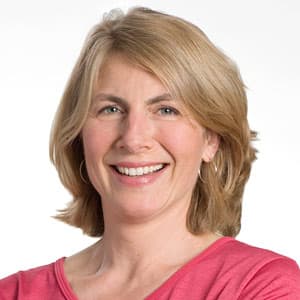Advertisement
How The One Fund Became Reality In 7 Hours
For many people, the Boston Marathon bombing is similar to the assassination of President John F. Kennedy, in that they remember exactly where they were when they learned what had happened.

Mike Sheehan, the chairman of the Boston advertising agency Hill Holliday, was at one of the city's hospitals when he got the news.
He recalls:
I was at Mass General visiting my father, who was sick at the time at the hospital. I was with my kids. I was down in the cafeteria when I saw it on my smartphone and we finished eating, and as we came upstairs it was organized chaos in the hospital. They were asking doctors who were leaving not to leave because it was around 3 o'clock and so it was a shift change.
Then all the sirens came — all the sirens. And then leaving with SWAT teams outside and trying to explain to a 7- and a 4-year-old why this was happening, why there were people with machine guns on top of transport vehicles in the parking lot of Mass General. Boston lost a lot of innocence that day. It really did.
At the hospital that day, Sheehan didn't yet know he would play a critical role in the creation of The One Fund, set up to help victims of the marathon attack, which to date has received more than $70 million. But on Tuesday he'll receive a Henry L. Shattuck "City Champions" award from the Boston Municipal Research Bureau on behalf of the team of people who designed the fund.
Sheehan's involvement began the evening of the attack, when he contacted the company that sponsors the race, John Hancock, which is a client of his ad agency, and offered to help however he could. John Hancock asked Sheehan to be on a 10 a.m. conference call the next morning with Mayor Thomas Menino — and during that call Sheehan was given an urgent deadline, which he recounted to WBUR's All Things Considered host Sacha Pfeiffer.
Advertisement
Mike Sheehan: The mayor said, "I'd like to start a fund, a survivor relief fund, and I'm going to have a press conference at 5 o'clock today announcing it. And so go get it done."
Sacha Pfeiffer: So he gave you seven hours to get this fund up and running?
Seven hours.
What was your anxiety level when you realized you had seven hours to get it done?
There was no time for anxiety. You just had to get it done. So one hour later we had the name and the logo approved. Then we called PayPal. Bank of America set up the back office, which is a Herculean task. Goodwin Proctor, the law firm, they had the articles of incorporation done by 5 o'clock and filed at the attorney general's office. There's nobody we asked for help who didn't help. And there was not one nickel of expenses.
So you had to conceptualize what this was, design a logo, set up the nonprofit status, and get a system set up where people could donate money?
Yes. And it worked, at least by 5:15 p.m. There might have been a couple of glitches in the first 15 minutes.
This was literally the day after the marathon bombings. The city was reeling. How were people working through this even as they were trying to emotionally process what happened?
I think the work helped them process emotionally. I think people desperately wanted to help out. Initially, we kind of thought the fund might get to maybe $10 million. We were at $10 million by noon on Friday — without any active fundraising. This was all an outpouring of generosity. It came in from almost every country and it came in from over 200,000 donors. And it didn't stop. And it still hasn't stopped. I went home the other day and there was a $100 check in my milk box in front of my house from someone who knew that I was working for The One Fund.
Six months later?
Six months later. And we know next year around the marathon there's going to be a lot more.
For the most part, the fund was a seamless process with few or any glitches. But, as you know, there was some debate about how the money was distributed. You know, how do you pay people with more invisible wounds? What about longer-term illnesses and injuries that might not emerge until over time? How do you feel about that aspect of the process?
I don't think there's any perfect way to do it. But we knew the money had to go out quickly because of people's needs, particularly those people who lost limbs. They needed to really change their lives quickly. They needed to change how their houses were configured. They may have needed to move. They may have needed a new vehicle. We knew they needed that fast and so we responded to that.
The second phase will be more case management-oriented, so we're actually interviewing every survivor right now, one-on-one, to see what their needs may be. In the future, they may not be cash gifts but may mean providing access for people to the care they need for the injuries that they suffered
The logo for The One Fund is already very familiar, maybe on its way to becoming iconic, and I understand that was designed in about 15 or 20 minutes.
It was 15 minutes.
Has that created a nervousness on your staff that from now all creative projects will need to be done as quickly? No more ruminating for weeks?
We do not want all our clients to know that we can do something that iconic in 15 minutes. We do bill by the hour!
This program aired on October 22, 2013.
